本文由 Wendell Burnette Architects 授权mooool发表,欢迎转发,禁止以mooool编辑版本转载。
Thanks Wendell Burnette Architects for authorizing the publication of the project on mooool, Text description provided by Wendell Burnette Architects.
Wendell Burnette Architects:该项目场地是一个由裸露的花岗岩和高耸的仙人掌组成的半岛,四周常年环绕着沙漠冲刷层,只有一小块土地可以从点缀着蜡烛木的山脊进入。沿着一条长长的私人车道往下走,项目基地一直向西延伸到一片开阔的边缘地带——远处是一层层的山脉——傍晚时分,这里似乎是亚利桑那州日落的缩影。对我们来说,社区视线之下的场地高度和道路入口的大门很重要——它们将房子变为一个深深的阴影——退入下面深度而复杂的沙漠地面。
Wendell Burnette Architects:The site is a peninsula of granite outcroppings and towering Saguaro cacti surrounded on all sides by deep perennial desert washes except for a single spit of land affording access from an Ocotillo studded ridge above. The building site, further down a long private drive, levels out toward the west into an edge condition dominated by an expansive vista – layers and layers of distant mountain ranges – that in the evening seem to epitomize the drama of the Arizona Sunset. Due to the elevation of the site beneath the community’s gaze and the entry gate at the road it became important to us – to recede the house as a deep shadow – into the depth and complexity of the desert floor below.

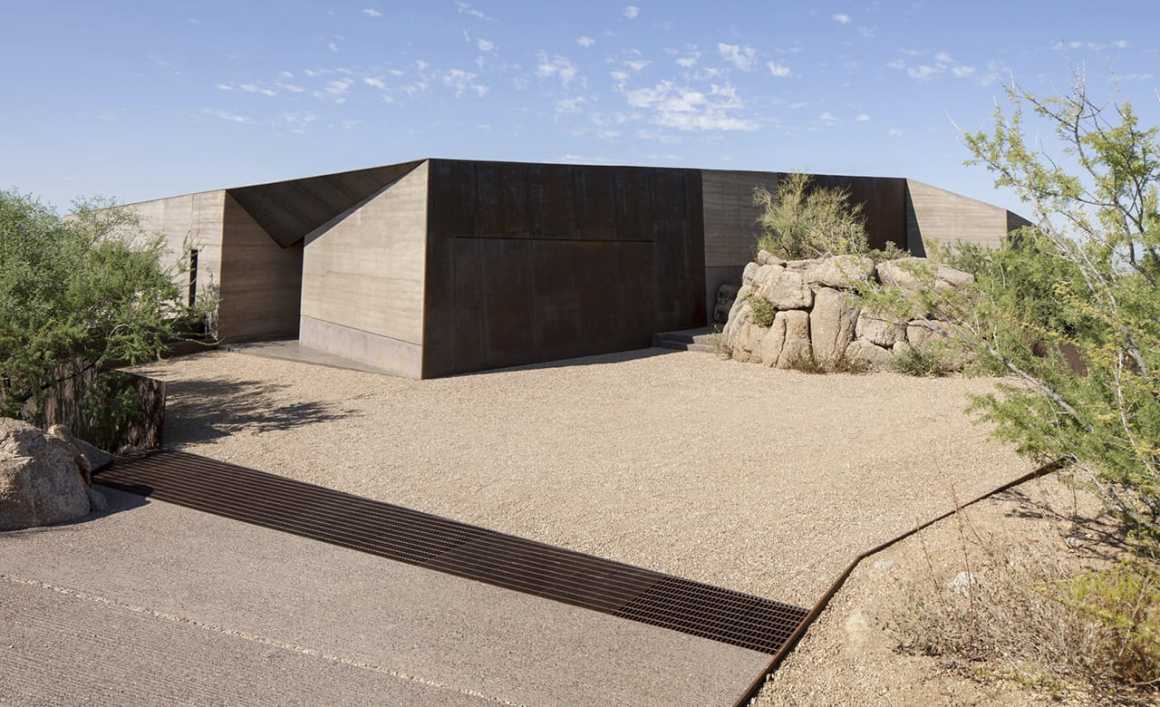
当你踏上这片精致的场地,你会觉得自己仿佛进入到了一个禅意花园。花园的东部边缘可以听到水流声——即使在沙漠里也能听到——一年中有一半时候,都有流水穿过破碎的、正在分解的花岗岩巨石地和一丛丛香蒲。在场地的最高点,有一个巨大的箭头形花岗岩巨石,指向西方一群奇特的火山岩和一个巨大的多臂仙人掌。当我们第一次站在这个地方的时候,就立刻感到,我们有必要抓住并保存这片珍贵的原始沙漠景观的缩影,包括其同样无限的、独一无二的天空。
When your feet begin to move across this delicate floor you feel as though you have entered a Zen garden. At the eastern edge of our garden, the sound of water is heard trickling – remarkably even in our Desert – for half the year through a fractured decomposing granite boulder field and a rush of cattails. At the highest point of the site we took delight in a large arrow-shaped granite boulder pointed west, a peculiar group of volcanic rocks and a large multi-armed Saguaro between. Standing in this place for the first time, we felt immediately compelled to hold and preserve a microcosm of this precious primordial desert landscape including an equally infinite piece of its indomitable sky.

一个宁静的沙漠庭院的形式开始慢慢浮现。这个庭院的概念引起了我们客户的兴趣,因为它所提供的舒适环境——空气、光线、隐私、安全和宁静——是所有家庭普遍渴望的。对我们来说,它也为我们提供了一个机会,去捕捉一段不受现代发展阻碍的古老时光,并以一种从周围的景观、自然力量、地质肌理、微妙之处演变而来,且会让我们觉得它一直都在那里的形式来完成这一点。现在我们开始反问这样一个问题:庭院的墙壁是否真的可以从场地本身生长出来,直接从场地开挖而不需要进出口吗?
The form for a serene desert courtyard slowly began to emerge. The courtyard concept intrigued our client as the comforts it offered – air, light, privacy, security, and tranquility – were the ones universally desired in a home. For us, it also offered the chance to corral a piece of ancient time unencumbered by the recent development and to do so with a form that evolved from the surrounding landscape, its natural power, its geologic mass, its delicacy, one which would feel as though it had always been there. We began to ask the question “whether the courtyard walls could literally grow from the site itself, from the site excavation with no import no export required?”
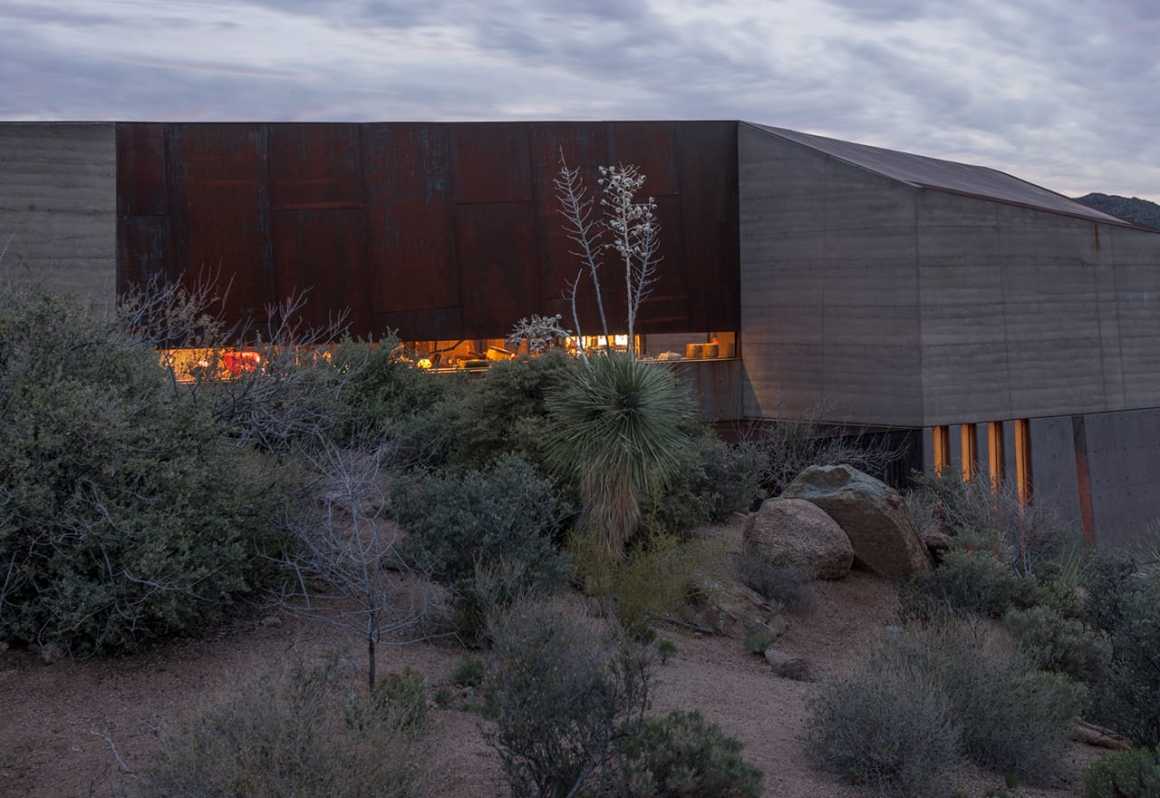
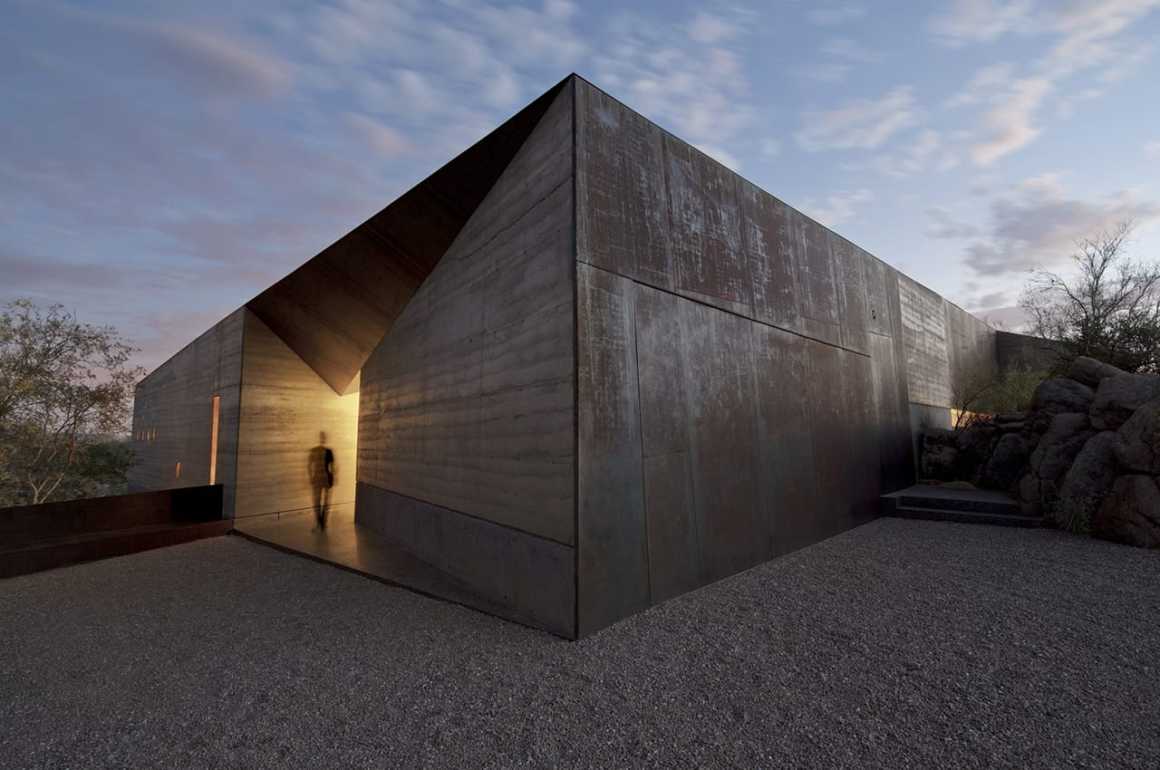

通过样本测试我们发现,场地的土壤特别适合夯土这个最古老的施工方法之一。升降机中木制模具之间的间隔较大,可容纳3英尺高的泥土层,然后将泥土和水泥的干混合物(3-8%)压实成12英寸厚的热质层,如此逐层提升,直到达到墙体的高度。最后它还需要一个稳定的地基和屋顶,以保护免受雨水和侵蚀。我们在洪水平面上方建造了必要的地基作为基础,然后将其扩展到庭院中作为钢琴基座,超越厚厚的围墙,作为欣赏广阔土地和天空的最基本观景形式——一个巨大的基于土地空间比例的基座。
We discovered through sample testing that the soil from our site was uniquely suited for rammed earth, one of the oldest methods of construction. Wooden molds held wide apart accept 3 foot high layers of earth in lifts, then a dry mix of dirt and cement (3-8%) is compacted down with pressure pounding into a 12 inch layer of dense thermal mass, lift by lift until the height of the wall is achieved. It requires a stable footing at the ground and a hat for protection from rain and erosion. We raised the requisite foundation just above the flood plane as a base and then expanded it into the courtyard as a piano nobile, beyond the thick perimeter earthen walls, as the most elemental form from which to view the expansive qualities of land and sky – a massive land based land scaled – plinth.
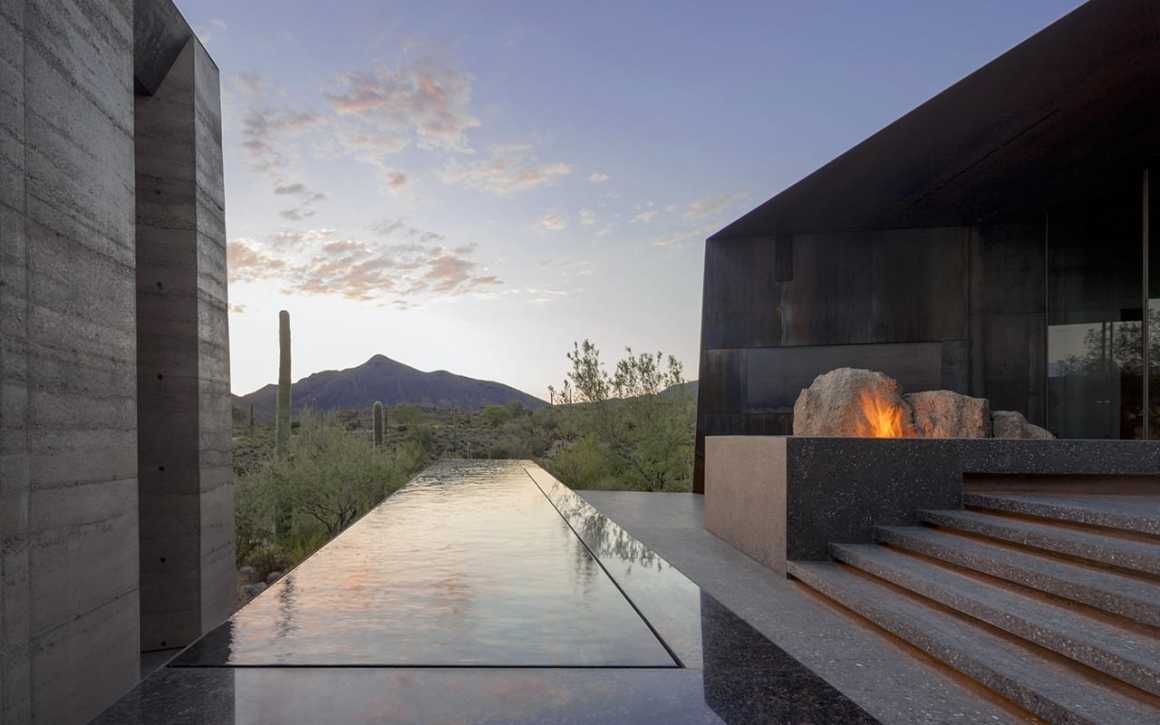
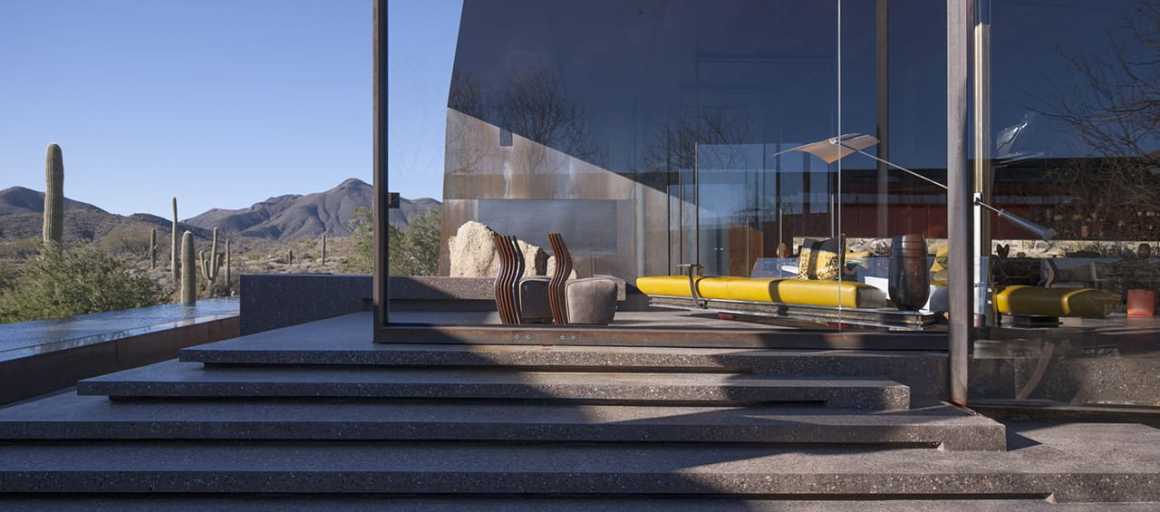
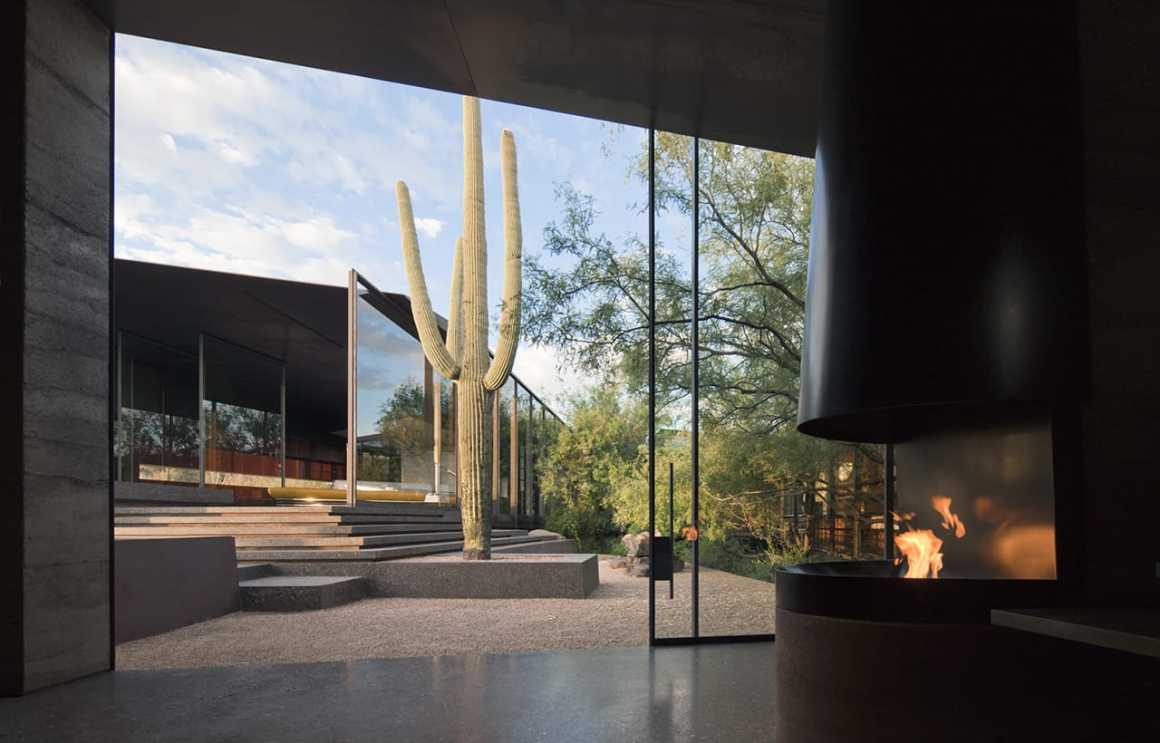


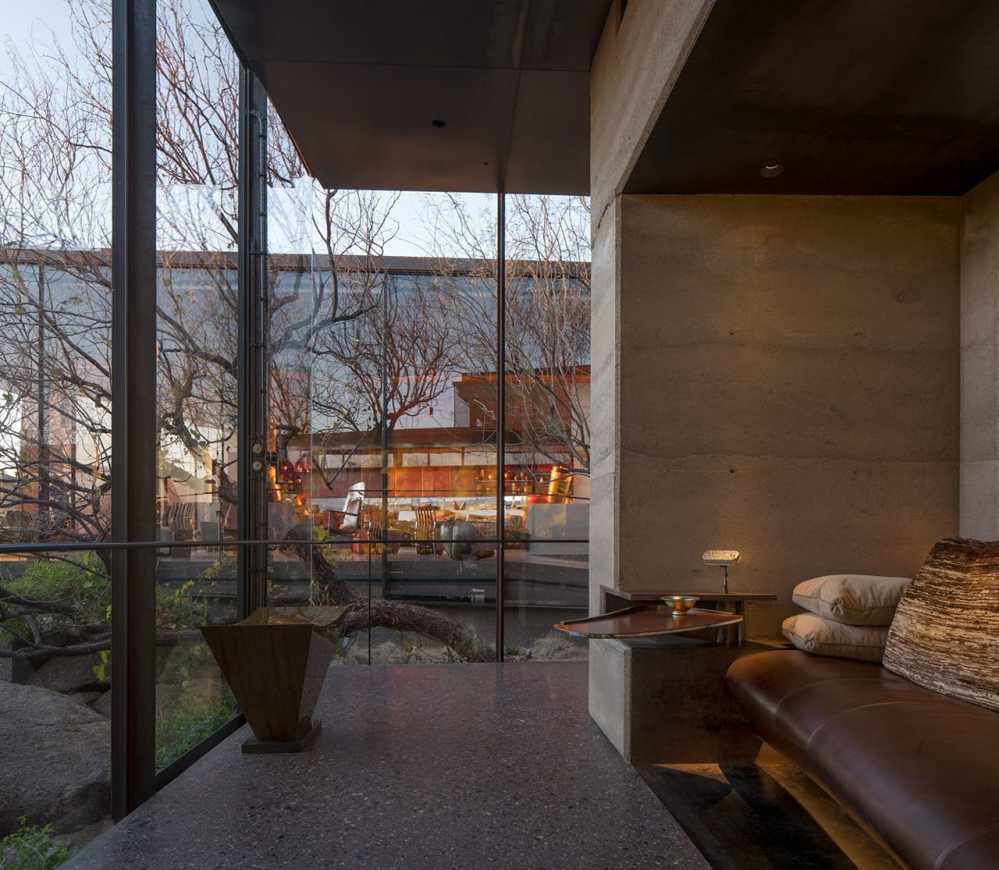
住宅基座是用同一种材料浇铸而成的,这样墙壁、地板、坡道、台阶或长凳都可以作为一块连续的石头的一部分。Verde河最终与将世界上最坚硬的骨料汇聚在一起的盐河相连,流过山谷的最低点,这里的沙子和黏土是当地用于生产混凝土的材料。本项目特别选择了一种大一倍的“公路混凝土混合料”,并掺有少量土颜料——生赭色。我们想对基座的表面进行处理,以展示其材料、沙子、砾岩砾石、卵石、碎石在水泥基质中的混合性质,从而为了解这个地方的地质年代打开一扇窗。
The plinth was cast in place with one material throughout such that a wall, a floor, a ramp, a step, or a bench could be experienced as part of one contiguous stone. The Verde River eventually connects to the Salt River, which collectively tumbles some of the worlds hardest aggregate through the lowest point of the valley, where along with sand and cement, it is harvested for locally produced concrete. A “highway concrete mix” with oversized 1 ½” aggregate was specifically selected for this project and mixed with a small percentage of the earth pigment – raw umber. We wanted to work the surfaces of the plinth in order to reveal the composite qualities of the material, sand, conglomerate gravel, pebbles, broken stone, in a cement matrix, and consequently a window into the geologic time of this place.
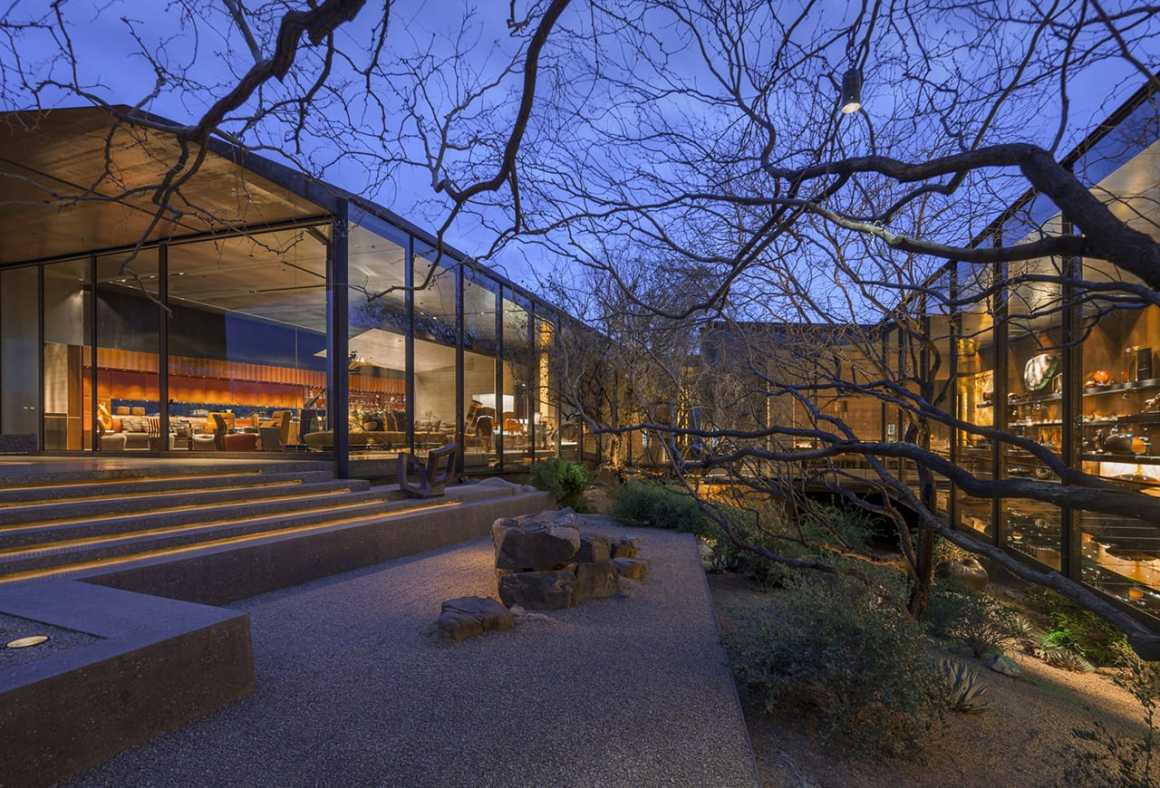
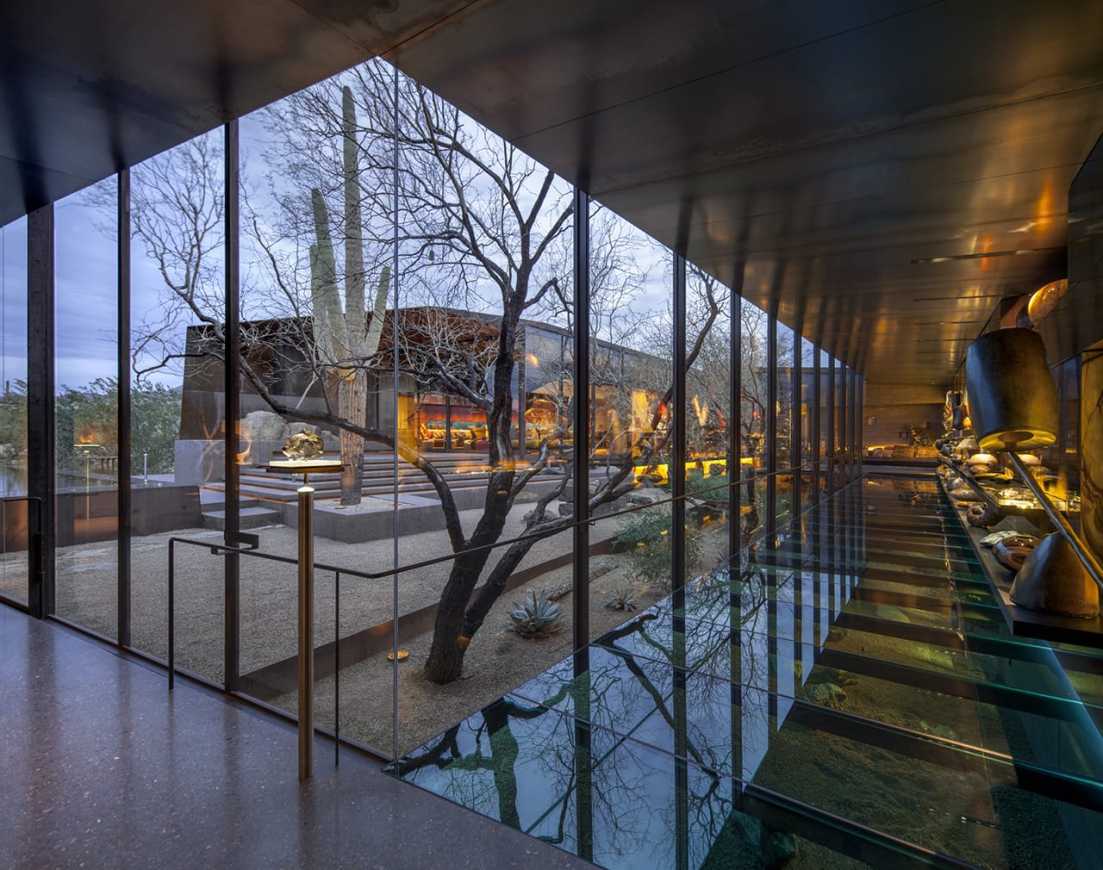

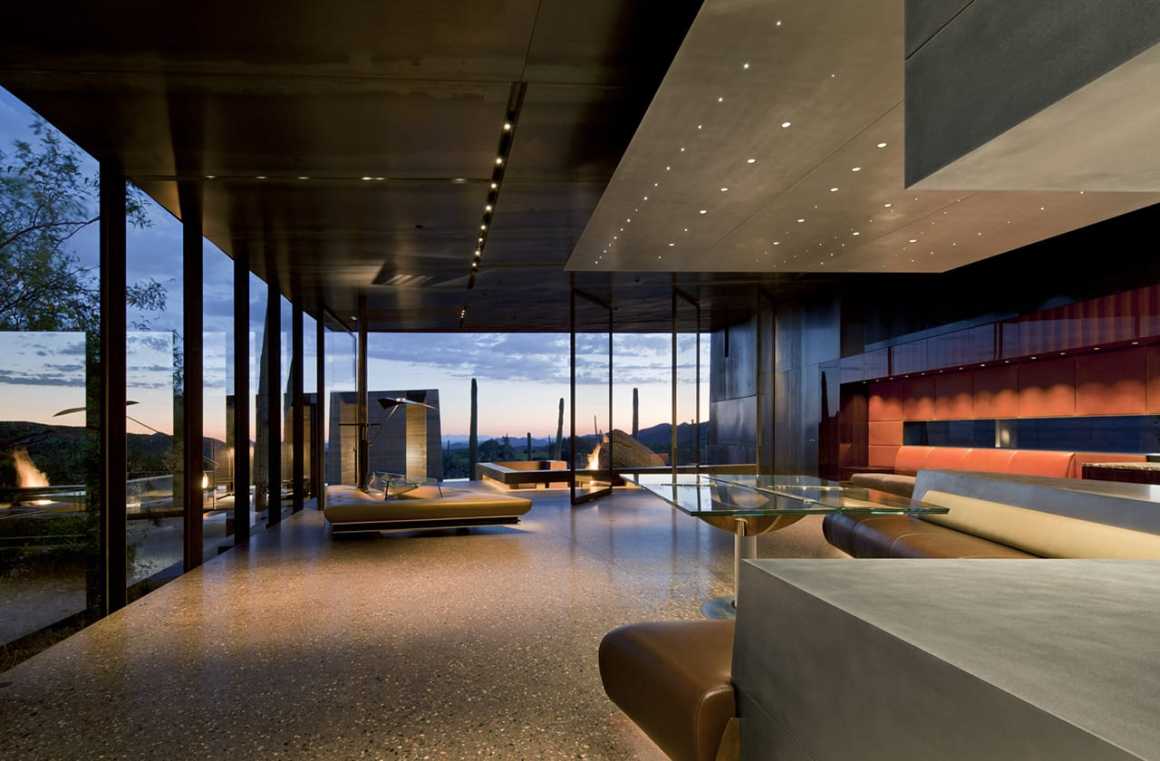
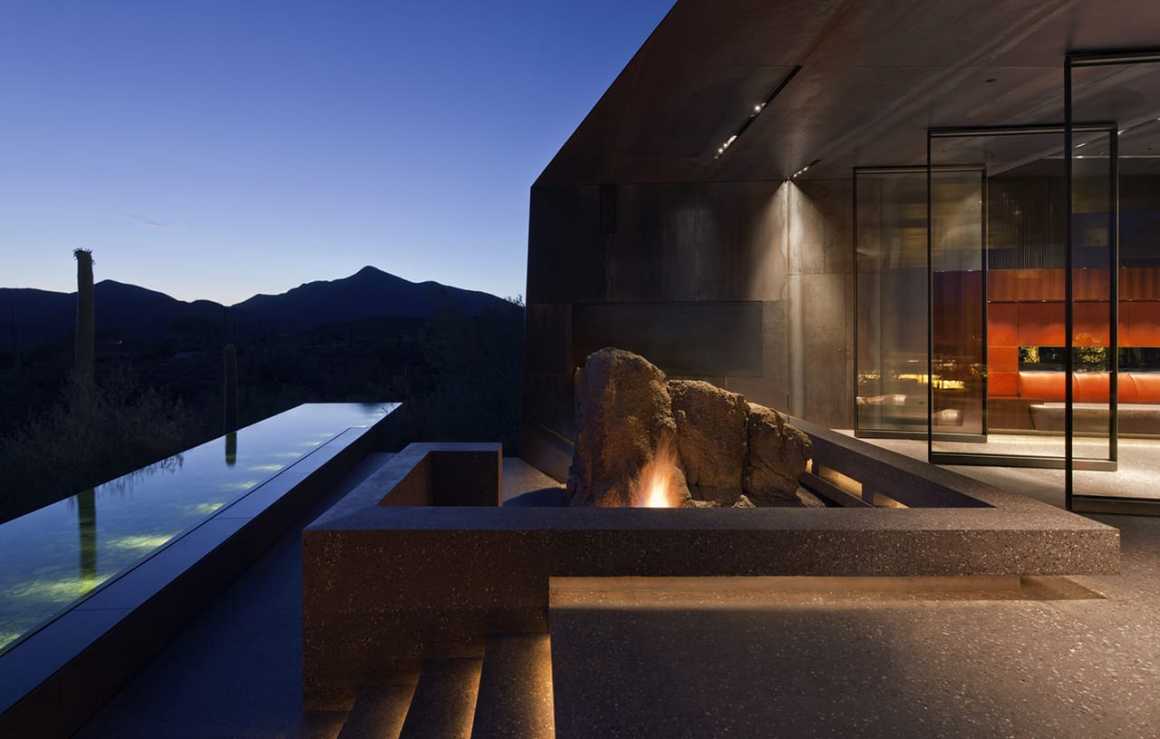
地形的整体高度遵循设计准则,因此地面在自然坡度以上24 ‘处呈分段的单线状,几乎察觉不到地面盘旋上升,围绕着庭院实体向远处的西部开放。结合这种几何形状,外部空间和混凝土地形从垂直方向向内倾斜了3度。土墙所需的屋顶保护着整体庭院的形式,它是一个多面阴影的连续部分,从单斜的最外层边缘开始,一直向内延伸到内部庭院,为天空绘制了一个不规则的框架。
The overall height of the landform follows the design guidelines and therefore the ground at precisely 24’ above natural grade in a segmented monocline that spirals almost imperceptibly up and around and out where the solid mass of the courtyard form opens up to the distant west. In conjunction with this geometry, the outsides of the earth and concrete landform are faceted inward 3 degrees from vertical. The hat required for the earth walls protects the monolithic courtyard form as a contiguous part of a faceted shadow that begins at the outermost edge of the monocline and continues inward toward the inner court where it stops just short of itself inscribing an irregular frame for the sky.
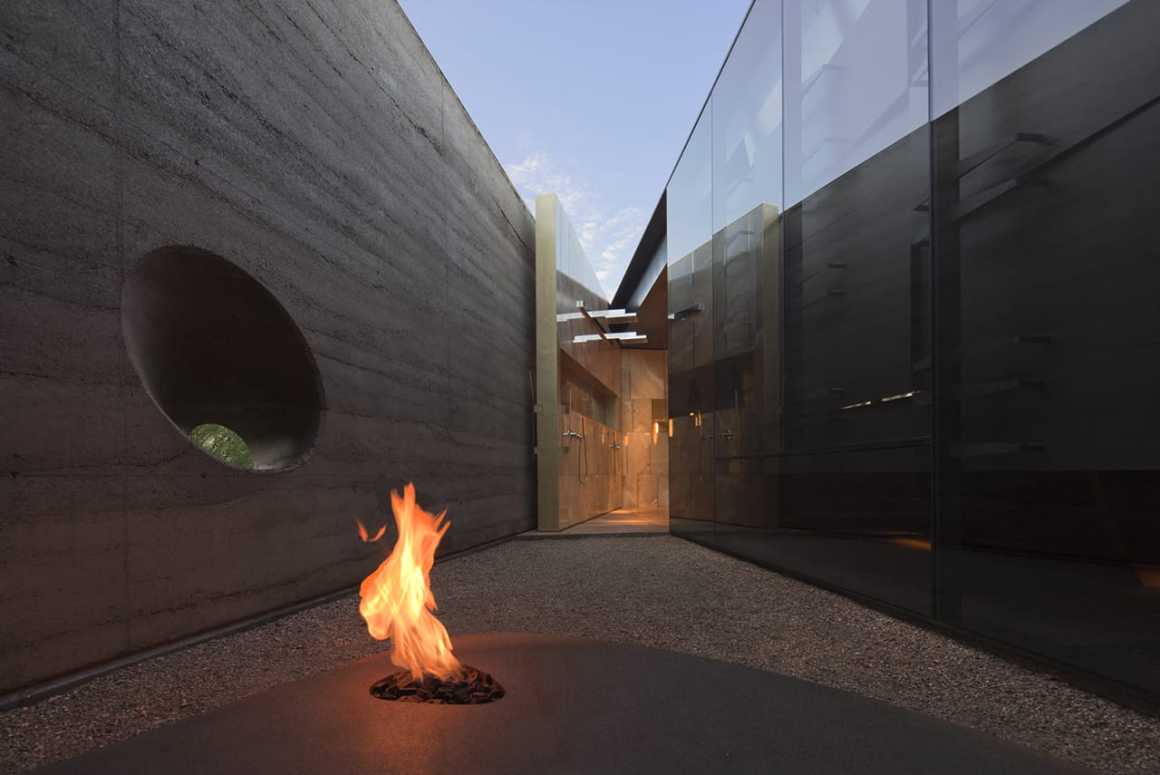
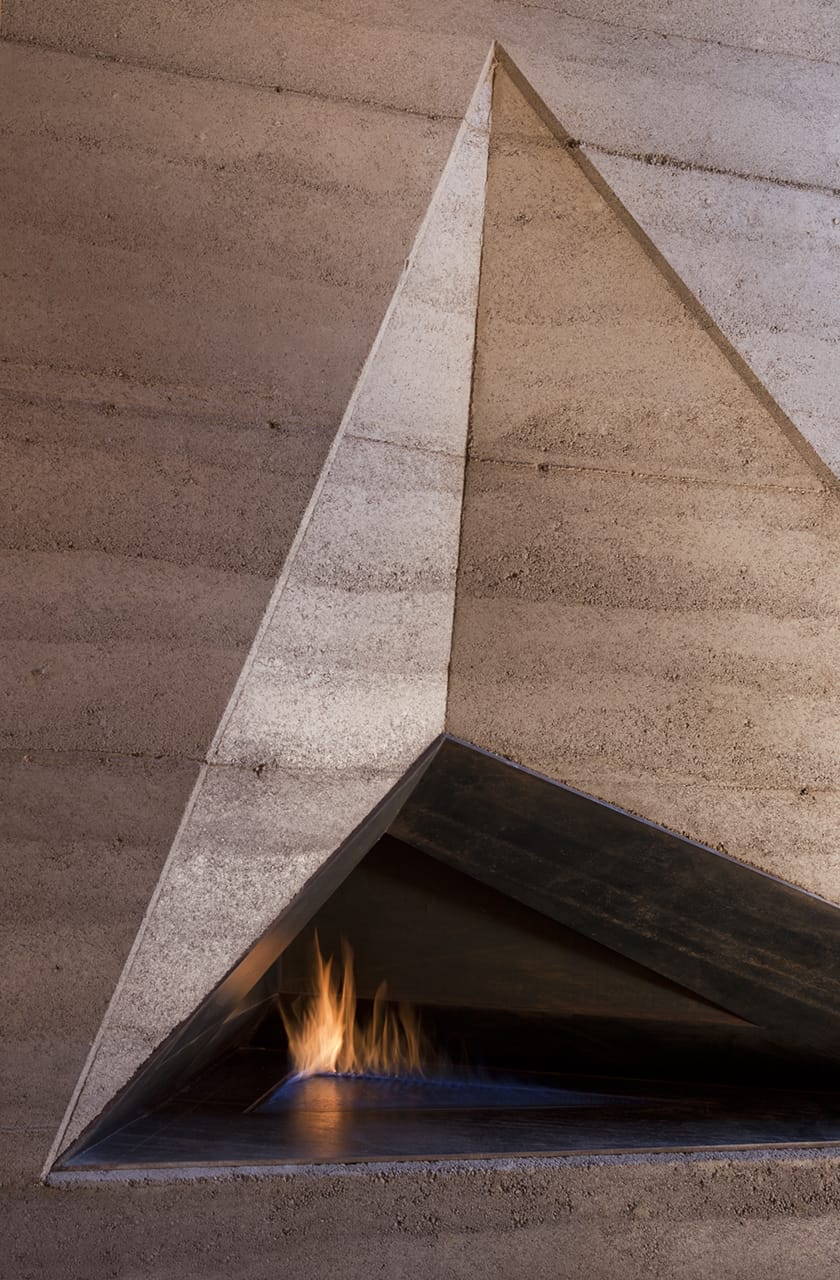
这些块、中空体块、刻面块、裂缝块、裂缝和铰链分离的体块,展示了我们是如何从庭院平面图到体块分割的,而当你用手触摸或用眼睛欣赏配件和固定装置时,它又给这个家赋予了另一层品质。例如,当用指尖触摸轮廓分明的青铜空隙时,木制品的体积仅显示内部的内容物,从而使物体轻轻裂开。磨光钢板天花板上的长裂缝透出光线的同时,保持了夜晚的虚无景致。建筑体块和其中发现的不可思议的美景,正是索诺兰沙漠的非凡之处。随着我们的客户和他们的客人进入我们的Engawa住宅,我们希望他们将永远带着一丝惊喜重新发现事物的珍贵。
Mass, Hollowed Mass, Faceted Mass, Fissured Mass, Mass that cracks open and hinges apart informed how we proceeded to give this home its defining qualities from the courtyard plan, to the split-massing, all the way down to the fittings and fixtures that one touches with the hand or the eye. For instance, the millwork is volumetric only revealing contents within when a contoured bronze void is touched with the fingertips allowing the mass to be gently cracked open. Long fissures in the mill-finish steel plate ceiling reveal light while maintaining the quality of nothingness at night. Mass and the improbability of delicacy discovered within it, is what gives the Sonoran Desert its remarkable presence. As our clients and their guests move into the mass of this landform into our Engawa, we hope they will always rediscover with a hint of surprise the preciousness of things.

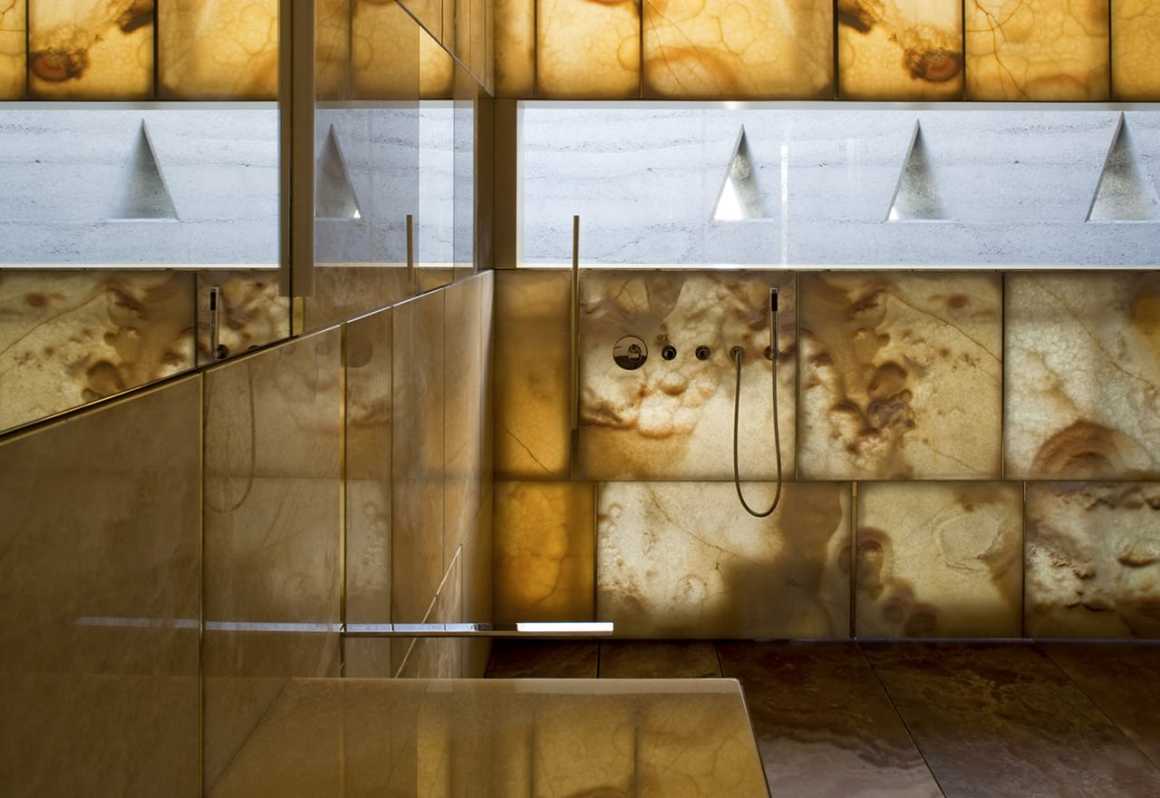
▼建筑模型 Model
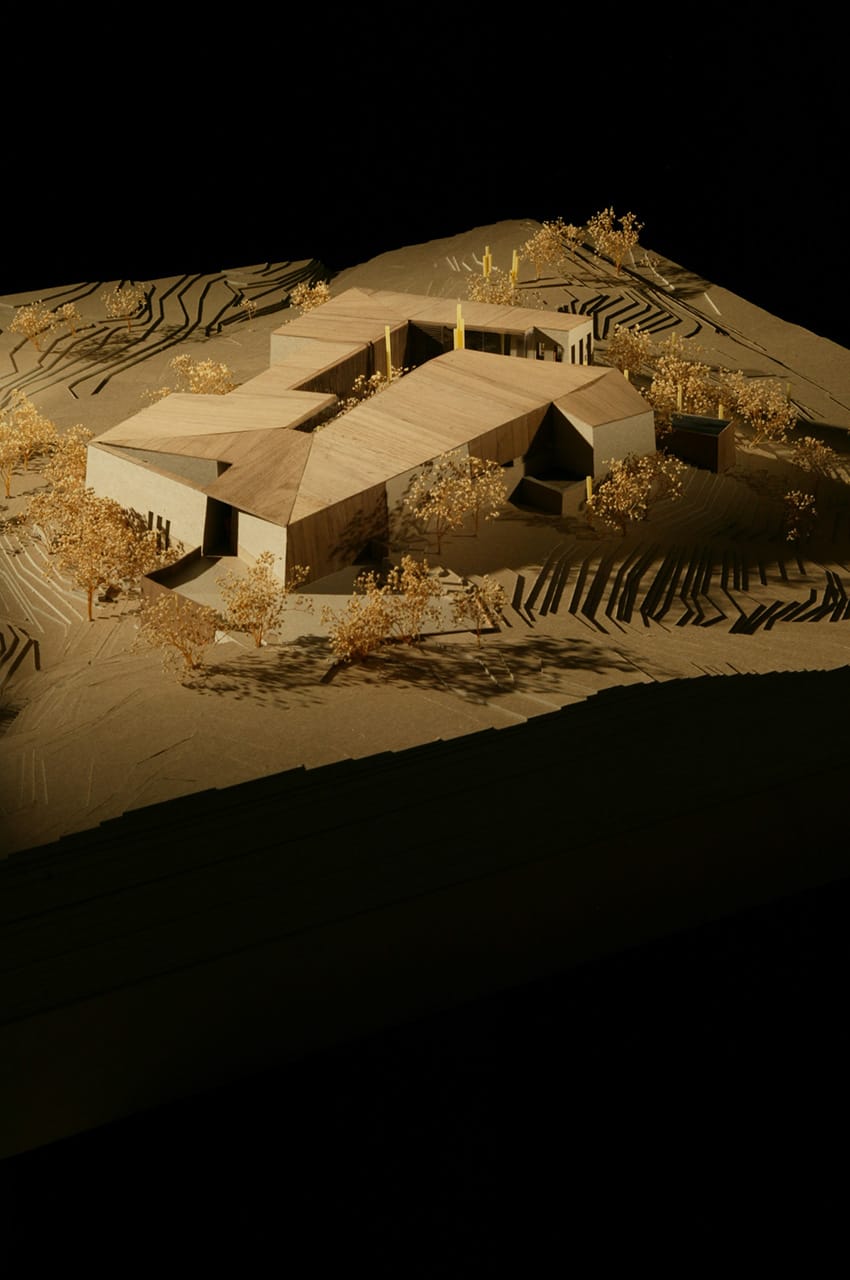
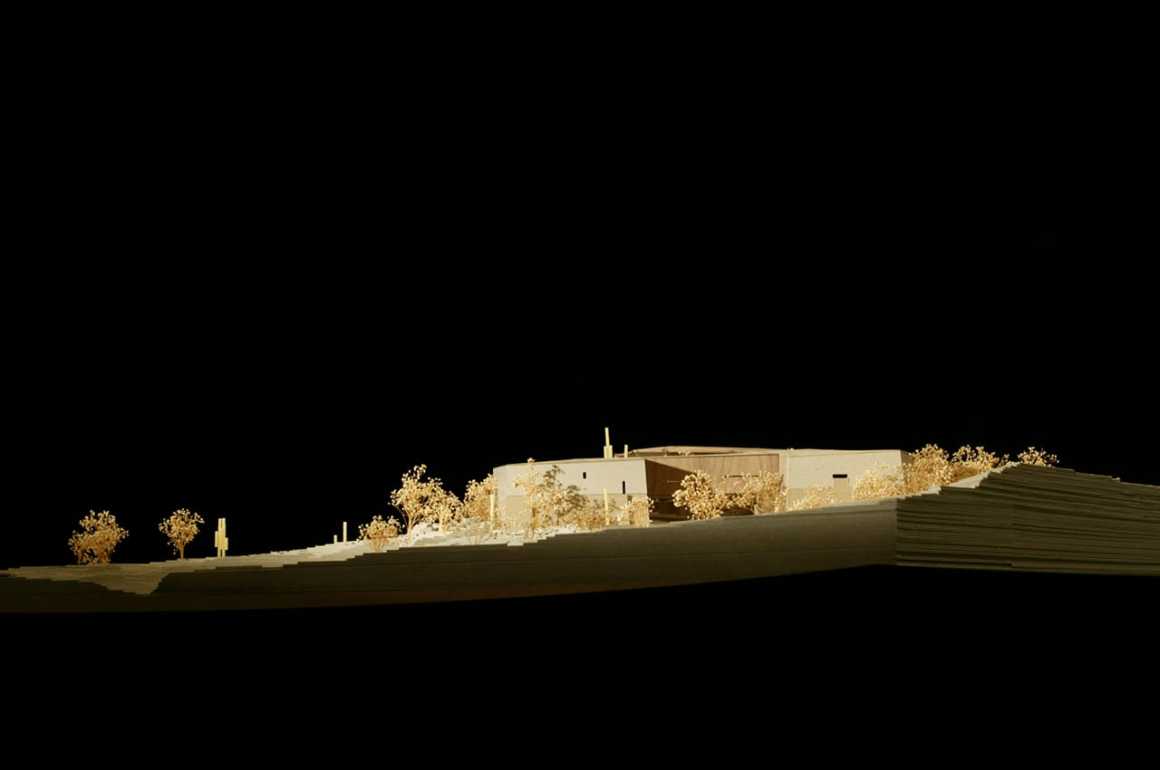
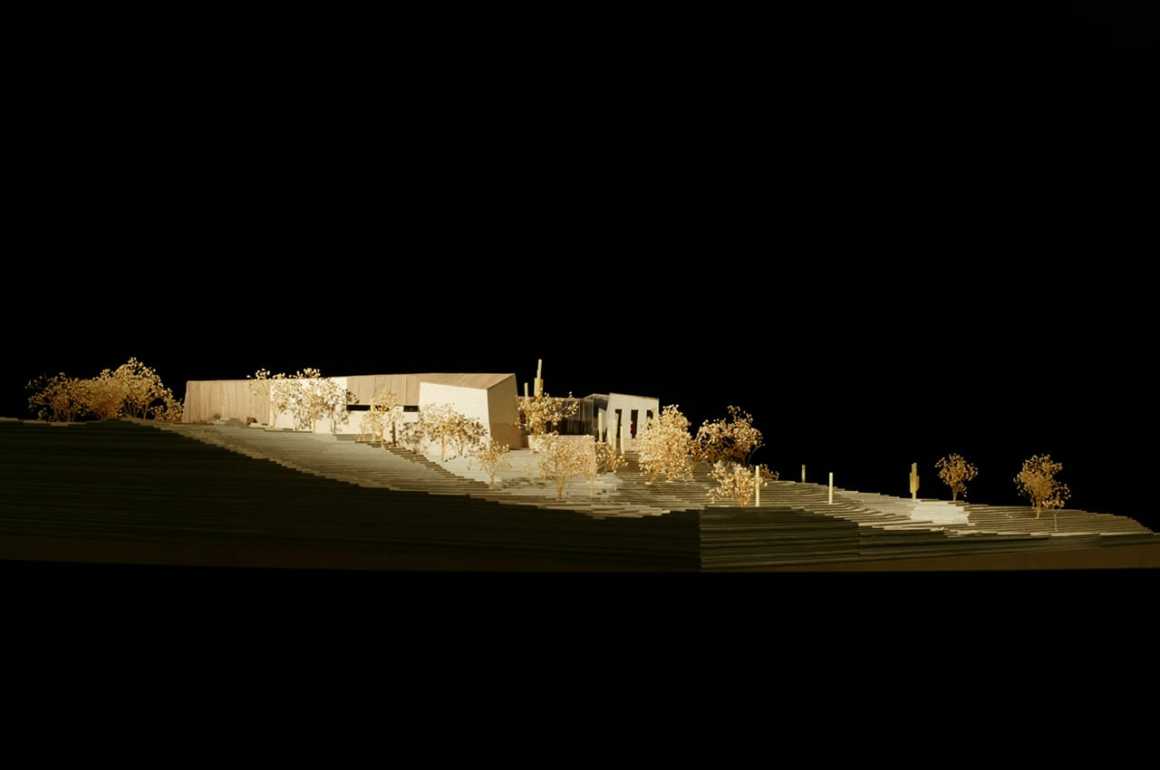
▼设计草图 Sketch
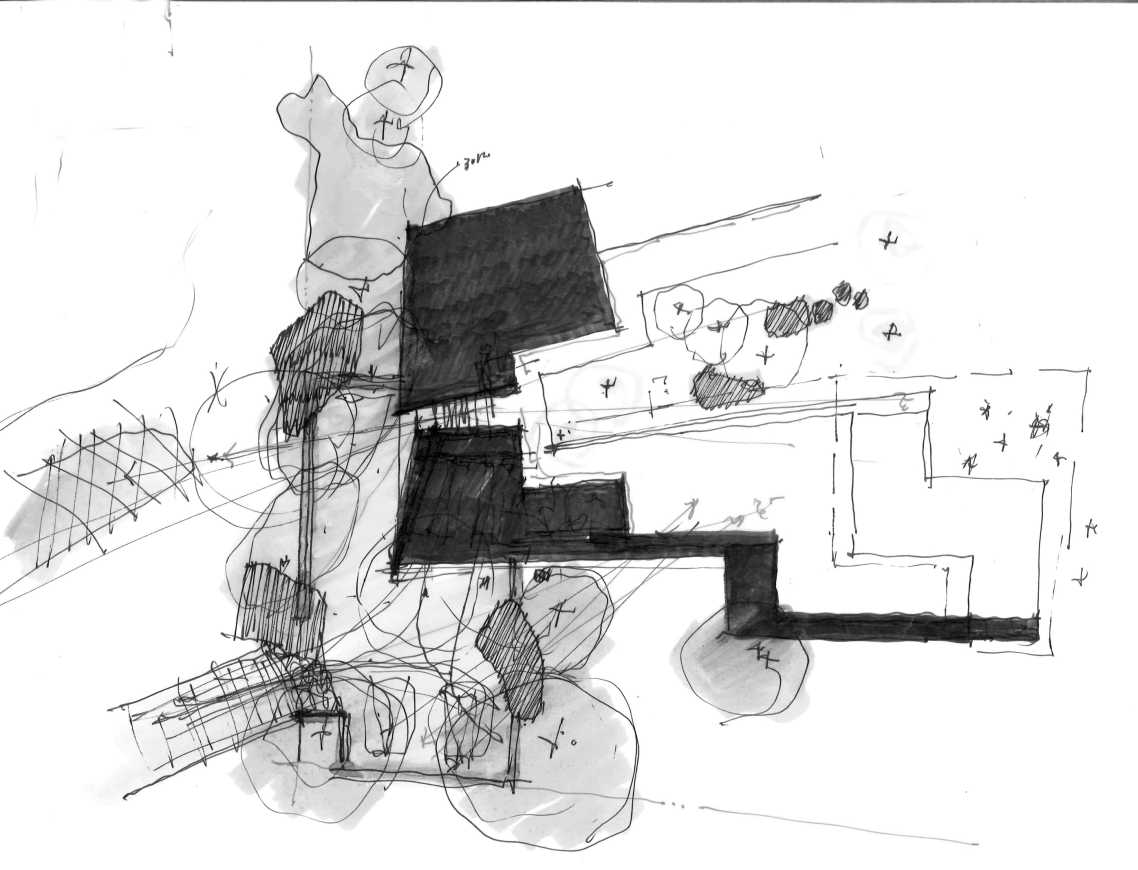
▼建筑各层平面 Plans
▼建筑剖面 Section
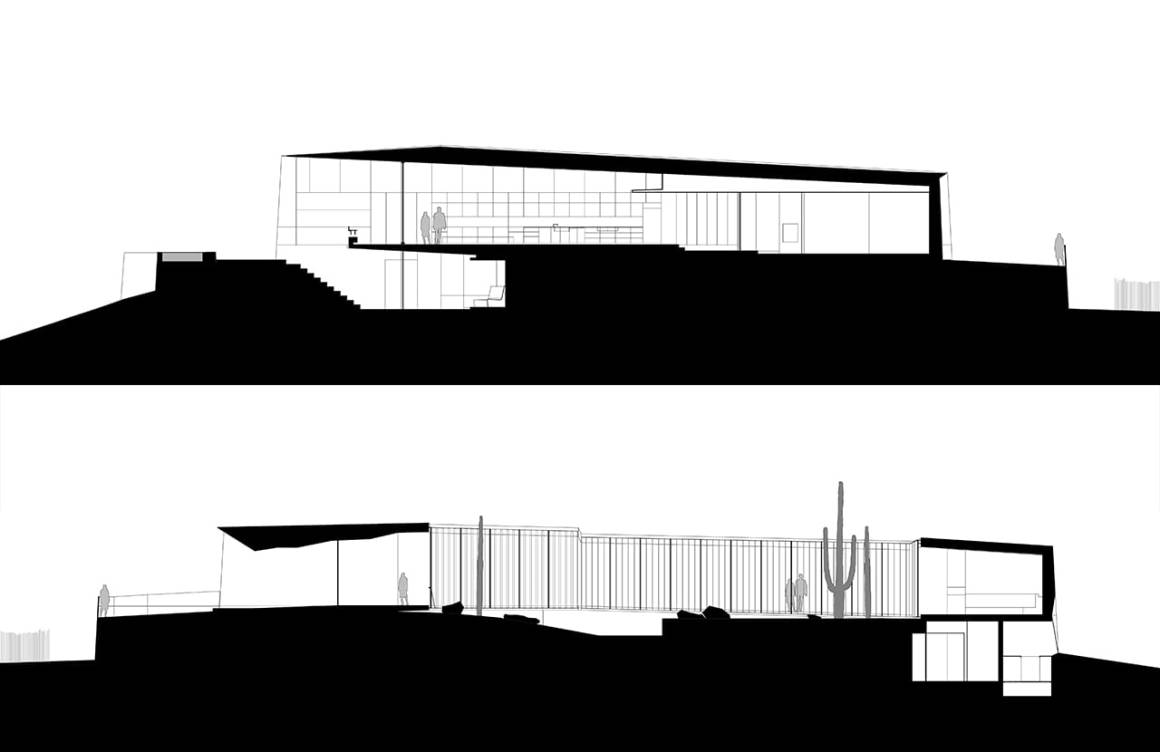
项目面积:7,200平方英尺
项目地点:美国亚利桑那州斯科茨代尔
项目团队:Wendell Burnette(主创设计),Thamarit Suchart(项目经理/首席设计合作者),Jena Rimkus, Matthew G. Trzebiatowski, Scott Roeder, Brianna Tovsen, Chris Flodin, Colin Bruce
承建商:The Construction Zone, Ltd.
顾问:Leavitt–Weaver, Inc(室内+家具设计);Rudow + Berry, Inc.(结构工程);Associated Engineering(电机工程);Kunka Engineering, Inc.(机械工程);Rick Engineering(土木工程);Ljusarkitektur P&O AB(照明设计);
Debra Dusenberry Landscape Design(景观设计);Wardin Cockriel Associates(视听/声学)
照片来源:Bill Timmerman
Project Size: 7,200 square feet
Project Location: Scottsdale, Arizona
Project Team: Wendell Burnette (Principal-in-charge of Design), Thamarit Suchart (Project Manager / Chief Design Collaborator), Jena Rimkus, Matthew G. Trzebiatowski, Scott Roeder, Brianna Tovsen, Chris Flodin, Colin Bruce
Contractor: The Construction Zone, Ltd.
Consultants: Leavitt–Weaver, Inc (Interior+Furniture Design); Rudow + Berry, Inc. (Structural Engineer);
Associated Engineering (Electrical Engineer); Kunka Engineering, Inc. (Mechanical Engineer);
Rick Engineering (Civil Engineer); Ljusarkitektur P&O AB (Lighting Design);
Debra Dusenberry Landscape Design (Landscape Design); Wardin Cockriel Associates (Audio / Visual / Acoustical)
Photo credit: Bill Timmerman
更多 Read more about: Wendell Burnette Architects


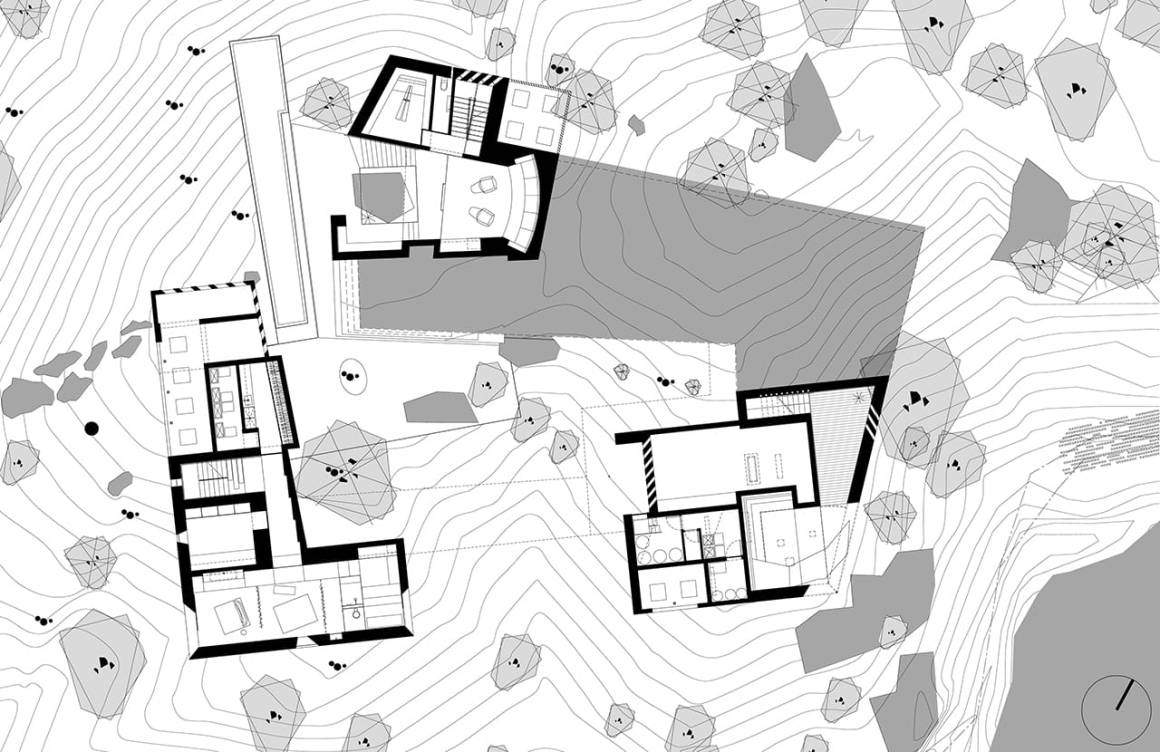




0 Comments